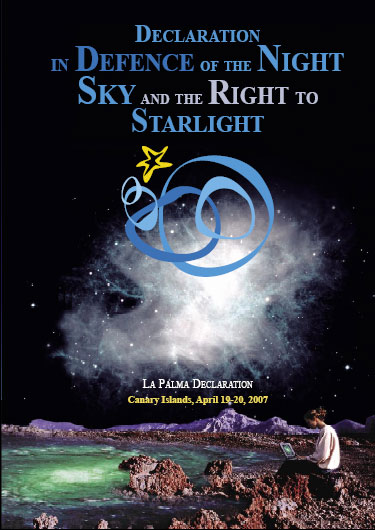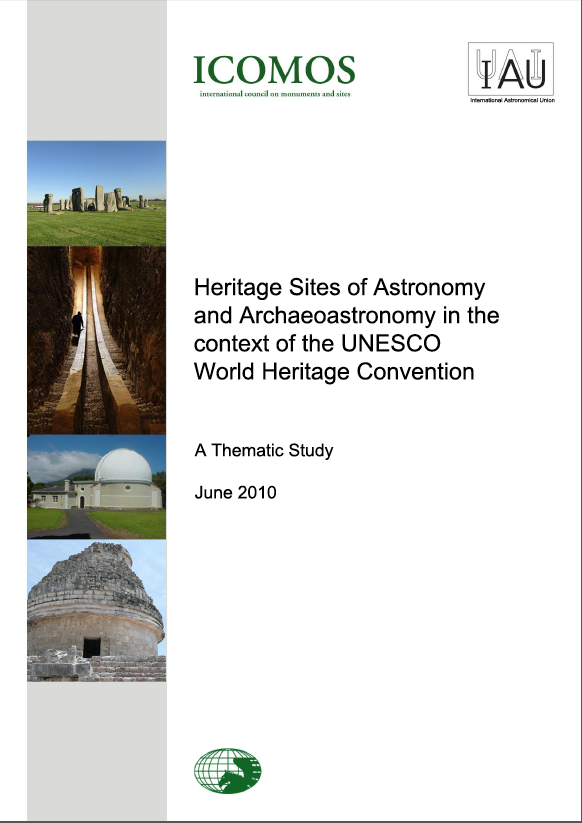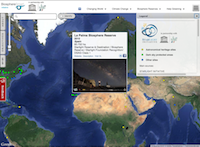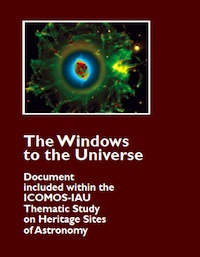Astronomy and World Heritage
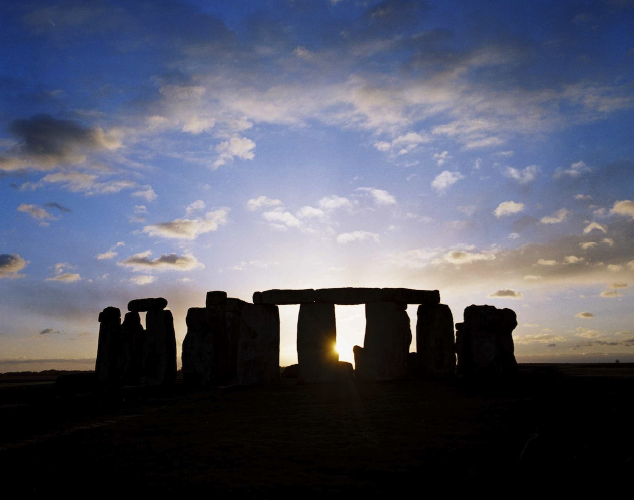
For more than thirty years, UNESCO has been working with countries all over the world to identify sites suitable for classification as world heritage and to ensure that they are protected for future generations. There is currently a total of 851 cultural, natural and mixed sites on the World Heritage List. Their splendour is the best testimony to the diversity of our planet and its inhabitants.
Understanding the relation between man and nature in order to preserve it is one of the fundamental objectives of the World Heritage Convention. The sky belongs to us all and forms a whole with the environment perceived by man. Associating nightscapes with natural and cultural heritage protection is a logical step in the relationship between man and nature.
Man’s relation with the sky is constantly changing. Its previous mystical role has now been obscured by the realities of modern life. Although its apparent lack of motion fascinates our moving world, it is frequently seen as a space for developing trade, information, or more generally, a place for spatial tourism and scientific discoveries.
At present, the lights of our cities hinder the contemplation of the sky, source of inspiration and knowledge for all cultures of the world. The loss of this link has lead to an impoverishment of our sensitivity to the phenomena of nature and the understanding of the universe.
One of the main objectives of the Declaration in Defence of the Night Sky and the Right to Starlight is raising awareness concerning the preservation of these values. There is a need to promote this Declaration, which supports the recognition and conservation of natural and cultural sites of exceptional universal value and their nightscapes".
FRANCESCO BANDARIN, Director World Heritage Centre (Statement Starlight Conference 2007).
The Portal to the Heritage of Astronomy
Following the Starlight meeting held in La Palma in November 2009, members of the IAU Working Group Astronomy and World Heritage and the Starlight Initative are working together, and with the approval of the UNESCO World Heritage Centre, to produce this new integrated web site for the UNESCO–IAU Astronomy and World Heritage Initiative.
Access to the Portal >
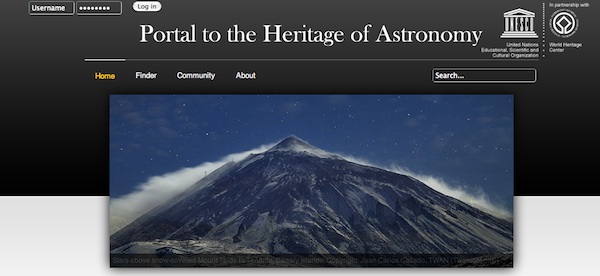
The UNESCO World Heritage Committee, at its 34th session in Brasilia, Brazil, has for the first time endorsed a study into a field of science heritage.
The thematic study on the Heritage Sites of Astronomy and Archaeoastronomy, prepared within the framework of the International Year of Astronomy 2009, presents an overall vision of astronomical heritage and attempts to identify some of the most outstanding examples which are of significance to all humankind. “Astronomy represents a rich and significant part of humanity’s shared cultural and natural heritage.
Recognising this formally means that we can now identify and clarify astronomical value in the context of the World Heritage Convention,” says Clive Ruggles, chair of the IAU’s Working Group on Astronomy and World Heritage and co-author of the study. Anna Sidorenko-Dulom, Chair of the International Year of Astronomy 2009 Cornerstone project Astronomy and World Heritage and coordinator of the thematic initiative Astronomy and World Heritage at UNESCO World Heritage Centre adds: “Recently there has been a lot of interest in reviewing the relationship between the heritage of the sciences, the traditional knowledge of indigenous communities, and the World Heritage Convention.
In this context, the new Thematic Study provides the foundation for assisting State Parties to harmonise their Tentative Lists at a thematic level and to prepare nominations, including comparative analyses explaining the importance of nominated properties in their national and international context. This raises serious possibilities of inscribing astronomical sites of outstanding universal value on to the World Heritage List.”
Press Release
Heritage Sites of Astronomy and Starlight
The sky, our common and universal heritage, is an integral part of the environment perceived by humanity. Multiple factors, and most notably the continued increase in light pollution are leading this resource, virtually unchanged throughout the history of humankind, to turn into an extremely scarce asset. An essential element of our civilisation and culture is rapidly becoming lost, and this loss is affecting most countries on Earth. Under these conditions, certain places whose sky is still dark, and whose scientific, cultural or environmental values depend on starlight, should be recognized and preserved as reference sites of a common heritage in danger.
Case studies - The Windows to the Universe
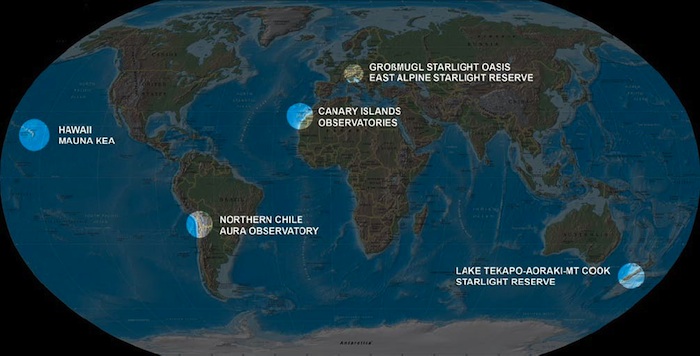
Memorandum of Understanding UNESCO-IAU
On 30 October 2008 the Director-General of UNESCO, Mr Koïchiro Matsuura, and the Secretary General of the International Astronomical Union (IAU), Professor Karel A. van der Hucht, signed a Memorandum of Understanding (MoU) formalizing their intention to expand their collaboration in the development of UNESCO’s “Astronomy and World Heritage” thematic initiative.
More information in UNESCO Site
| < Prev |
|---|
LOOKING FOR SOMETHING?


Starlight Initiative collaborates with the
PORTAL TO THE HERITAGE OF ASTRONOMYUpdates
- New Brochure of UNESCO`s MAB Programme partnership
- Galicia adopts the Starlight Declaration
- Starlight at the 39th session of the World Heritage Committee
- International declaration warning about the effects of blue-rich white light
- Flyer - Starlight Initiative in partnership with the UNESCO MAB Programme
- Astronomical Heritage - Hawaii 2015
- 2015 International Year of Light
- Montsec - Starlight Destination and Reserve
Starlight Finder
Starlight related links
![]()
Covenant of Mayors Related Initiative
![]()
Colaborating with IAU Working Group
![]()
IUCN Dark Sky Advisory Group
![]()
Dark Skies Awareness Project
![]()
Partnership Unesco-MaB
![]()
Member of the Knowledge Network
![]()
Instituto de Astrofísica de Canarias
|
The Starlight Initiative is designed as an international action in defence of the values associated with the night sky and the general right to observe the stars. It is open to the participation of all scientific, cultural, environmental, and citizens' organizations... |
In partnership with: |
|
|
|
